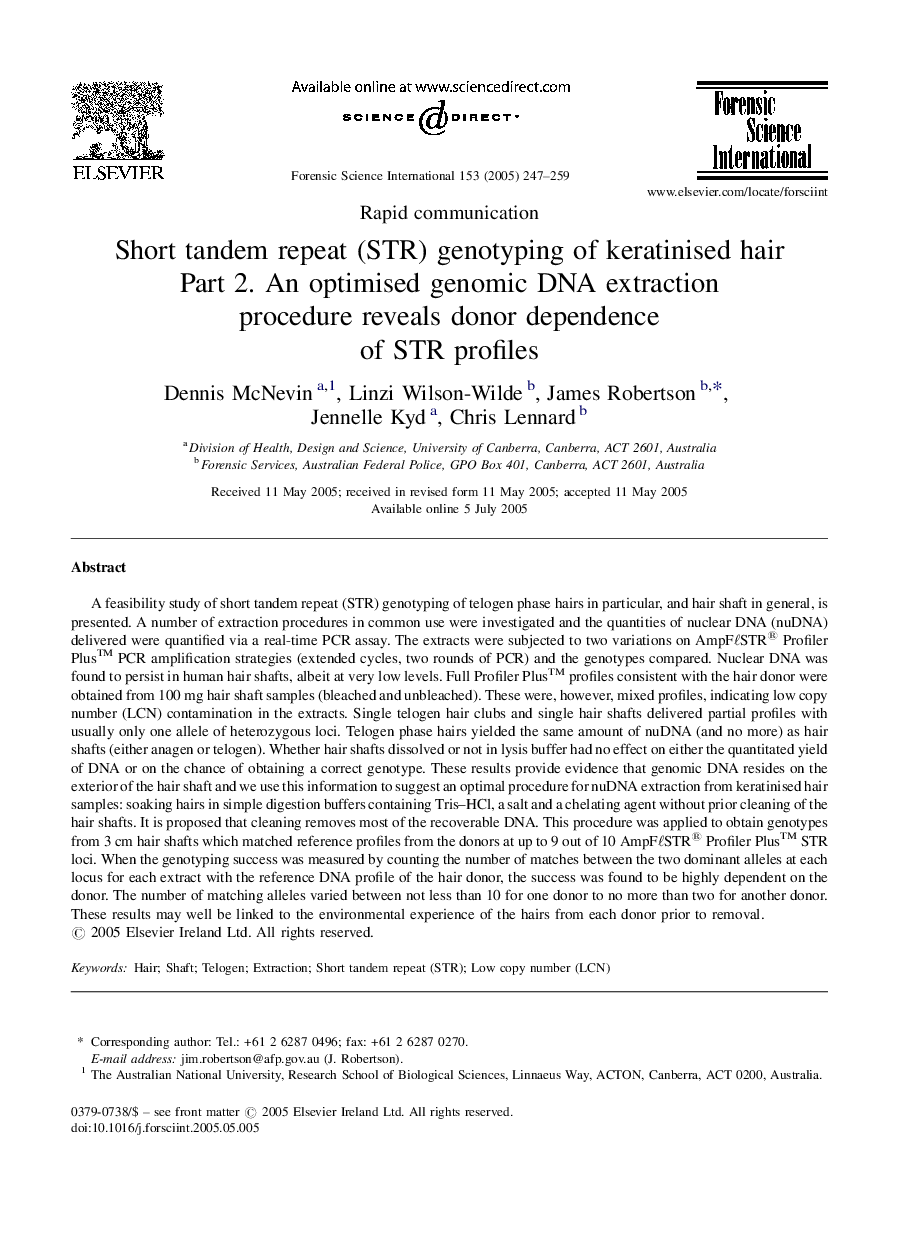| Article ID | Journal | Published Year | Pages | File Type |
|---|---|---|---|---|
| 9622468 | Forensic Science International | 2005 | 13 Pages |
Abstract
A feasibility study of short tandem repeat (STR) genotyping of telogen phase hairs in particular, and hair shaft in general, is presented. A number of extraction procedures in common use were investigated and the quantities of nuclear DNA (nuDNA) delivered were quantified via a real-time PCR assay. The extracts were subjected to two variations on AmpFâSTR® Profiler Plus⢠PCR amplification strategies (extended cycles, two rounds of PCR) and the genotypes compared. Nuclear DNA was found to persist in human hair shafts, albeit at very low levels. Full Profiler Plus⢠profiles consistent with the hair donor were obtained from 100 mg hair shaft samples (bleached and unbleached). These were, however, mixed profiles, indicating low copy number (LCN) contamination in the extracts. Single telogen hair clubs and single hair shafts delivered partial profiles with usually only one allele of heterozygous loci. Telogen phase hairs yielded the same amount of nuDNA (and no more) as hair shafts (either anagen or telogen). Whether hair shafts dissolved or not in lysis buffer had no effect on either the quantitated yield of DNA or on the chance of obtaining a correct genotype. These results provide evidence that genomic DNA resides on the exterior of the hair shaft and we use this information to suggest an optimal procedure for nuDNA extraction from keratinised hair samples: soaking hairs in simple digestion buffers containing Tris-HCl, a salt and a chelating agent without prior cleaning of the hair shafts. It is proposed that cleaning removes most of the recoverable DNA. This procedure was applied to obtain genotypes from 3 cm hair shafts which matched reference profiles from the donors at up to 9 out of 10 AmpFâSTR® Profiler Plus⢠STR loci. When the genotyping success was measured by counting the number of matches between the two dominant alleles at each locus for each extract with the reference DNA profile of the hair donor, the success was found to be highly dependent on the donor. The number of matching alleles varied between not less than 10 for one donor to no more than two for another donor. These results may well be linked to the environmental experience of the hairs from each donor prior to removal.
Related Topics
Physical Sciences and Engineering
Chemistry
Analytical Chemistry
Authors
Dennis McNevin, Linzi Wilson-Wilde, James Robertson, Jennelle Kyd, Chris Lennard,
